Peter Henning takes on Challenge
Peter Henning is one of the most honored producers of television sports – in particular his stints as a cameraman for the NBC Ironman Hawaii shows from 1992-1999 and from 2000 through 2012 his work as Senior Vice President for Television for the World Triathlon Corporation supervising the production of all Ironman television broadcasts for NBC. During his 11 years as a producer, the Ironman World Championship broadcasts received 17 Emmy Award nominations and seven wins, plus four CINE Golden Eagle Awards. Throughout his 45 year career, Henning has been nominated for 34 Emmy Awards and won 16.
During his years covering Kona – which began with his work as a cameraman for NBC in the early ‘90s – Henning, and the teams he has worked with and eventually supervised, brought a ton of inspirational stories including oldest Ironman finisher Sister Madonna Buder, Dick Hoyt and his son Ricky, who suffers from cerebral palsy, the epic hand cycle battle between challenged athletes David Bailey and Carlos Moleda, Jon Blais finishing Ironman while afflicted with ALS, and many more. While serving up many unforgettable feature stories, Henning also gave perspective, emotion and suspense to the pro races – building a fan base for the swift stars of the sport.
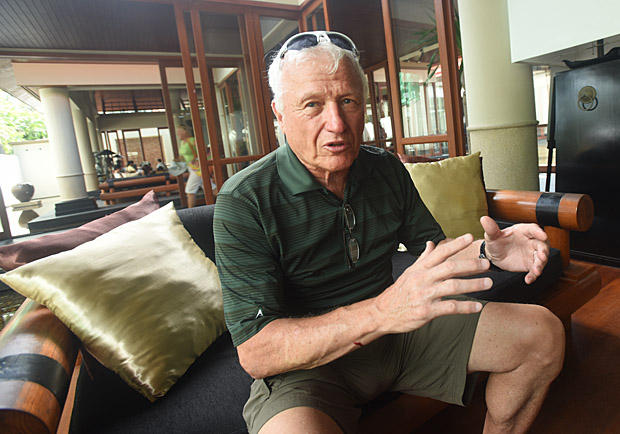
While many triathletes know about Henning’s triathlon work, his earlier career as a cameraman, director and producer of international news and sports was remarkable for its breadth and depth, quality and seriousness. He began covering the Vietnam War in 1969 as a freelance news and documentary cameraman, filming that conflict as a freelance for several outlets up to and including the American withdrawal from Saigon in 1975. That same year, tired of war, he knocked on the door of ABC Wide World of Sports and worked freelance for them on events like the Olympics and ski racing. During this period, he also worked on a freelance basis as a cameraman for outlets like PBS, BBC and ABC-News. His favorite news assignment was a 1986 story for 60 Minutes on U.S. Congressman Charlie Wilson’s remarkable mission to support rebels in Afghanistan – a story later made into a major motion picture starring Tom Hanks.
Through all of these chapters in his life, Peter Henning has been a pro’s pro at the art of documentary, a man who knows better than anyone how to find and tell a beautiful story with emotional wallop. A modest man, he once explained with wry understatement what he does: “It’s my job to make people cry.”
So for whatever mysterious reason, the World Triathlon Corporation let Peter Henning go with a pat on the pack inclusion in the Ironman Hall of Fame in 2013. Although Henning hasn’t a single bad word to say about the ending of his brilliant stint with Ironman, this observer thinks that decision may come to haunt the WTC. With his vision and talent undiminished, Henning has been signed by Felix Walchshöfer of the fast-growing Challenge Family organization to be their primary television consultant. Henning is charged with bringing the passion of Challenge to a larger global television audience. His impact on Challenge, the upstart to the giant WTC, could be great. After all, the Ironman World championship shows he led have been credited by many with being a key element in increasing mainstream interest and increasing age group participation in triathlon.
So it was educational to watch Henning work on a smaller production on the second year of Challenge Laguna Phuket. With a smaller budget than bigger Challenge projects in Atlantic City, Roth and Bahrain, Henning worked like a leader and a master teacher with the young Thai crew, placing them in the right spots for action and emotion and occasionally picking up the Hi-Definition main video camera himself. While most were using the new, less expensive tools of the digital age like small Canon DSLR cameras equipped with hi-res video, as well as a larger video camera, Henning’s vision of the story guided his crew with a modest budget through pre-race interviews with pros, a visit with a local small farm on a nearby island, and key shots of the race itself – always with an eye on the story.
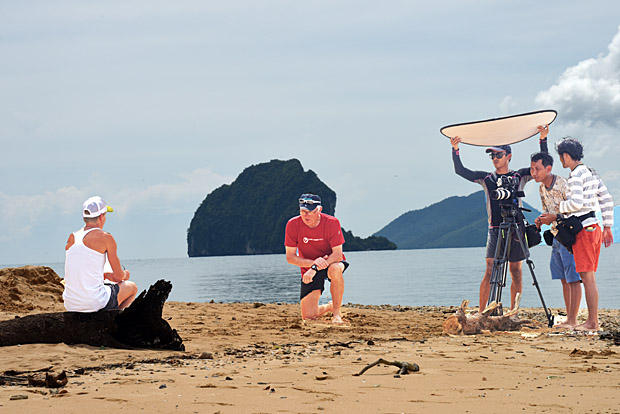
Slowtwitch: Is Laguna Phuket one of your favorite places?
Peter Henning: I was here, believe it or not, in 1966 when I was serving in the military and this place was just a place to go to for R&R during the Vietnam War. This was no resort – we came down here and lay on the beach. During my years covering Kona, I had heard of the triathlon at Laguna Phuket but I never made there when it was an Ironman event. When I arrived here last year and I saw this place, it was just amazing.
ST: Did you come here because it had become a Challenge event?
Peter: Yes. I met Ravi Chandran [Managing Director, Laguna Resorts and Hotels] here. And I talked to Belinda Granger and all the pros to get an idea what the stories might be.
ST: Pros who have been here love it. If you do a good show, the world will love it.
Peter: You have to remember the Laguna Phuket Triathlon is in its 21st year – so there is a long tradition of the sport here. [For two years, Challenge has also produced a half Ironman distance event the week after the shorter Laguna Phuket Triathlon]. A lot of people don’t even know how wonderful it is. It is at the end of a long season and most pros who come here are a bit used up. When they come here, this place energizes them.
ST: Why is this an alluring destination race?
Peter: The athletes just love coming here. The Thai people are the friendliest people in the world. You can walk the streets in the biggest city any time anywhere. You can eat the great food they sell in the streets or in the fanciest restaurants.
ST: The Thai people are friendly and welcoming, but they are also hardy survivors – as witnessed by their resilience after the tsunami a decade ago. They have an iron side to their character.
Peter: They are their own person. But there are ways to do that, and they do it the right way. They make you feel at home. They are phenomenal people. I enjoy working with them and being with them. The food is amazing.
ST: What did you see in this place and this race that makes a great TV show?
Peter: Laguna Phuket races are compelling. It starts with a unique swim. You start in salt water and end in fresh water. I have interviewed several athletes and get an interesting response. They tell us you start in buoyant salt water and then when they finish the first 1400 meters in the Andaman Sea, they go to fresh water in the lagoon for the final 500 meters. No salt, no buoyancy, so it uses up a lot more energy. They tell me it feels like you are swimming with a parachute behind you.
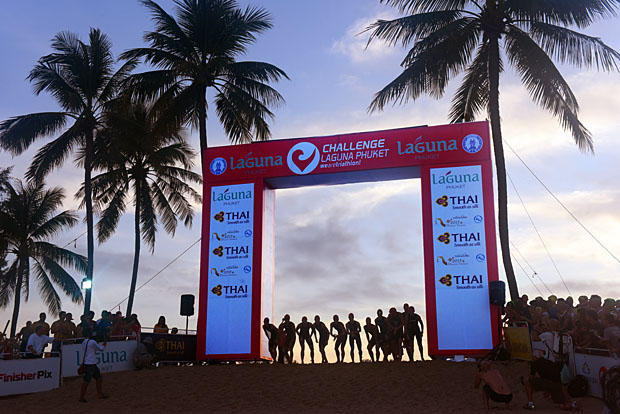
Then the first time pros coming here tell me they didn’t realize how steep those hills on the bike are. They are short, but very few have switchbacks. [German pro] Till Schramm was telling me that the Thais design roads that go straight up and over the top. They don’t build in switchbacks to make the climbs and downhills easier.
By the time you get to the run, it is very hot and humid. [On race day, Challenge Laguna Phuket topped out at 107 degrees Fahrenheit and 90 percent humidity – 20 degrees hotter and a few percentage points more humid than Kona]
ST: Kona and Roth are great venues for great races. How does this smaller race compare?
Peter: There is one Kona. There is one Roth. Those are all unique, iconic places. This is another iconic race for a number of reasons. Not just the race course. It is the people, the area, the terrain – all the environs. It is just a unique place to be.
ST: What is the most dramatic shot on the course?
Peter: It is on the next to the last descent at the halfway point of the bike course. The descent there is 22 degrees and can be very slick because there is often moss on the road from the recent rains and the constant humidity. I was shooting at that spot last year and I went to go across the street with tennis shoes on. I looked over my shoulder and fell on my back. I can't imagine coming down that on a bicycle. That is one of the places that stands out.
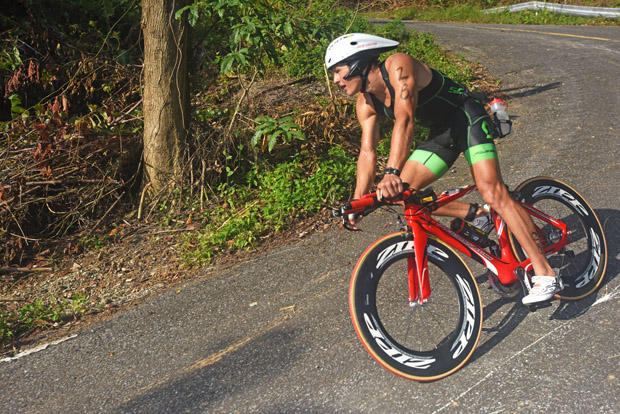
ST: When triathletes get to that hill, they are exhausted and racing hard. They have to be absolutely precise at the point of their greatest exertion.
Peter: Yes. That is spot on.
ST: When I heard about triathlons in Laguna Phuket, I imagined the bike course was cut out of a jungle. But I hear the reality is different and much more varied.
Peter: The race course goes through pineapple fields, acres of rubber trees, and through little villages. The other thing that impresses me are the schools. Every school beings their kids out for the race. You will come out of a virtual jungle, round a corner and all of a sudden there are 200 school children in their uniforms cheering for everybody racing by. In every group of young girls you can hear their high pitched shrieks and you see them waving flags and pennants.
ST: What else?
Peter: There are Buddhist temples along the way. And every house has a little prayer monument where they put offerings out to honor their dead.
ST: The ride doesn’t seem to be a through national park or a finely manicured resort.
Peter: Once you go inland there are more native Thai people – everyday workers, farmers, fishermen. It is definitely not a tourist trap type thing.
ST: The road from the airport to the resorts is part of the bike course. It has heavy traffic on narrow streets filled with roaming dogs and unpredictable scooters. It seems a bit dodgy.
Peter: As you come in from the airport, you are going through an area that was heavily hit by the tsunami. The stores are modest and many homes are makeshift. This area has taken a long time to fix up. It didn't get the immediate reclamation offered the resorts, which generate the big income.
ST: How hard were the resorts hit?
Peter: The amazing thing is how much has been rebuilt. If you go to the pro meeting tonight on the grounds of the Dusit Thani Resort and see the beach club on the shore, the area just south of the resort was totally wiped out by the tsunami. Now it has been revived . Everything else on this particular area didn't get hit so hard.
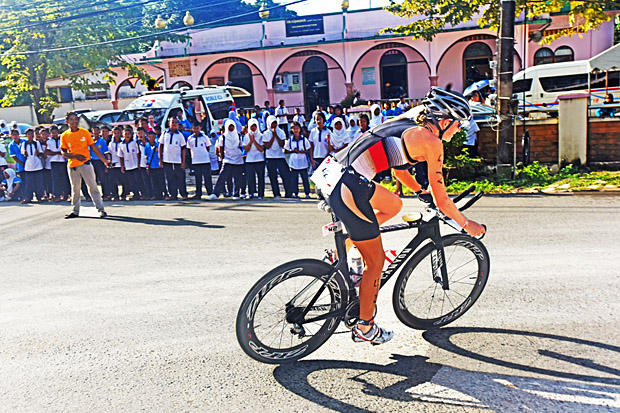
ST: Where will your Challenge Laguna Phuket be broadcast?
Peter: We are doing a one hour show of the Challenge event for Fox Sports Asia.
ST: Will it have a place on the American TV schedule?
Peter: The amazing thing to me – it is mind boggling – but to get on American television, there is no way on smaller budgets. For instance, to get a show like Challenge Atlantic City on, you had to do a time buy. Before you even shot any film, it costs $25,000 dollars to buy an hour. You get some commercials, but they aren’t worth what it costs. It is virtually impossible to get on American television without some kind of deal. And they are not cutting deals. It is hard. The numbers are down with ESPN International and all that stuff.
ST: If you can make a great show about the best Challenge races which highlight the personalities and show what a beautiful place this is, you should be able to make a difference.
Peter: It is the people. It is always the people. When I went to Ironman the people just leaped out at you. You look for those stories, and I submit that the reason people do triathlon today is because of them. If there hadn’t been two things — if there hadn’t been Julie Moss and if there hadn’t been ABC Sports covering it, I don’t believe we’d be going to Kona every year.
ST: What can good television show about the key races do for the Challenge Series around the world?
Peter: One thing I’ve found out over the years, the taste in television in Europe is very different than it is in America. For starters, in Europe if you are not at least in third place, you don't make the show.
ST: You proved the show can and should be about the shifting tides of the race and the clash of interesting people – including competitors who push the race in the early miles. If you eliminate anyone who isn’t on the podium, it makes it a dull parade.
Peter: It is one of those tough things – convincing people that it is the way to go. I just signed with Challenge a year ago. We are starting to get a few inroads into the Roth race and talking to their producers. But it is something that has been done that way for years and they feel it’s always going to be done that way.
ST: How much of an influence do you have with Challenge?
Peter: I am their television consultant. So I work for them and I kind of consult with them on different races. I produce certain races because I know the organizers who have hired me to do their races in the past. I did Laguna Phuket. I did Philippines for Challenge and I produced Challenge for Atlantic City for NBCSN. I also produce shows for them. But basically my connection is with Challenge. I feel I have a first allegiance to Challenge. And if I produce a race they have to be Challenge shows because I feel I shouldn’t do anything else. Actually I did a race last year in Vietnam for the Laguna Phuket organizers that was not a Challenge. But it was with all the same people here.
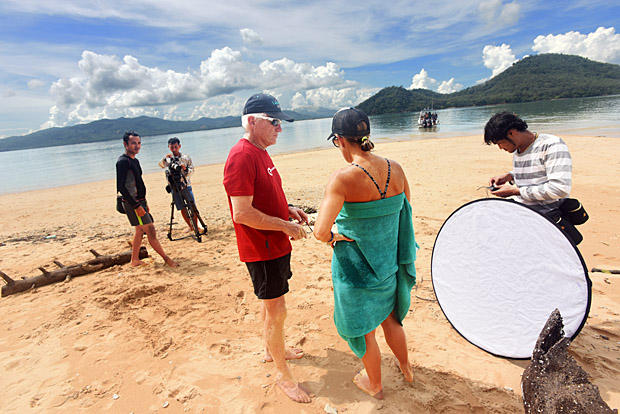
ST: What other things are you working on besides race show productions?
Peter: Right now we are working on a major global syndication program. This race will only be shown in Asia. But this race should be shown around the world. I was telling Ravi [Chandran] the director of Laguna, if I get global syndication, then Thai Airways will come in with more money. More sponsors will come in. A lot of local places don't want to advertise because they already have that local market. So if they have a new, expanded market to go to, they will buy in. And you can raise the race entry numbers if you give it enough international visibility.
ST: I gather this will be a gradually increasing investment in television for Challenge. What are you capable of doing with the funds available so far?
Peter: You have to stay within the budget. You are always held in by monetary limits. But if we had some bigger budgets I’d love to have a helicopter at every race with a gyro stabilizer camera like we did at Kona and Roth. I’d love to have that – but right now we can’t afford it anywhere but Roth. The budget here is quite slim. We are dealing in Thai Baht currency and only a regional distribution at this time. They had a helicopter once that was donated by the local police. But it was an ex-Huey and the video is shaking badly because there is no stabilized camera. So it was hardly worth even trying it.
ST: Seems like this series could grow if they offer shows that focus on personalities and inspirational stories. And build up the recognition of the pros and increase their fan base?
Peter: Sponsorship in triathlon used to be there were a lot of sponsors and not that many races. Now there are so many races and the sponsorship pool is much smaller. Now all the sponsors want in this reduced pool at just a few races. So now you have half going to one race and half to the other. And there is no big money going into any one place. That is what I try to convince people – they have to go outside of the sport. They have it get non-triathlon focused sponsors like insurance companies or car companies.
ST: Can you convince Felix Walchshöfer they should make one all stops effort to create a show at one race to see what impact it might have?
Peter: I would have thought they would have tried that with Roth a couple years ago.
ST: Do all race organizers look at it that all the real money comes from age group entries – and that is all the real money they will ever make? Or do they see a bigger opportunity in getting worldwide attention through first rate television coverage?
Peter: It is a hard sell.
ST: Are you optimistic that Challenge will give its television production efforts a major upgrade?
Peter: I would think next year there is a very good chance that will happen. Now I honestly think next year you will see a major shift in Challenge to kind of paint their races prettier and give it more of an effort in telling a story.
ST: I saw a Meta Man Triathlon show on the TV in my room and they said few words about Cameron Brown and Frederik Croneborg, but that was about it for a story. And it was boring. You are a master story teller – what do you need at the core of the show?
Peter: That is why you get the pros viscerally hammering out in the front. And that is why you pick the people among the age groupers who have real substance to them. I’m not saying the pros don’t have substance. But they tend to be a little boring. When you find the pro who is racing for a reason, that is a story you are looking for.
Q After 35 years, triathlon has had a roster of inspiring figures. How do you keep it fresh?
Peter: In itself that takes time. From year to year you have to find other subjects because you don't what to keep repeating the same story. I am not interested in seeing Sister Madonna Buder on one more television show. Yes she is fantastic. But that story has been told. It will not change. There have been many great stories like that. But those were Ironman stories. We have to find new stories. I told Zibi [Challenge Family CEO Zibi Szlufcik] I don’t want this to look like Ironman. I want Challenge to have its own image. I am not quite sure what that is. But we are working on it.
ST: How can you with a much smaller budget make a race look beautiful? What can you do with smart cameramen and smart producers?
Peter: The smart cameraman? I laugh since I was a cameraman. That is an oxymoron.
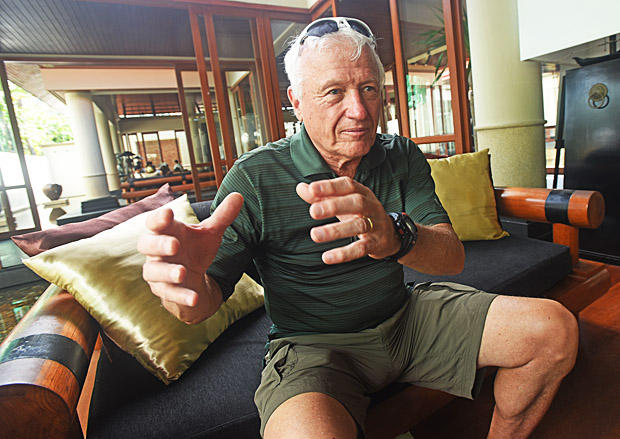
ST: There is still an art of doing the pros showing their ambitions, emotions and nuances – making people want to root for them.
Peter: One of the problems we are having is the Ironman Gorilla. A lot of the pros don’t want to say anything positive about Challenge – or any other event. They are afraid that the gods of Ironman will get mad and strike them down. That type of thing. I was talking about this the other day. I think there ought to be an overseeing body that had regulations and stuff to take care of things like that. A brand should not drive the rules. I think it should be an independent body. Not that FIFA or other sports organizations are doing a good job of it either. LAUGHS Somehow I just think once you get out of from under the Ironman umbrella, the whole sport can benefit. Granted I know we need these people – the pros who star in international races. But I think there is too much power exerted.
ST: What do you think a beautiful show with a lot of heart and people riveting to watch could do for the Challenge brand?
Peter: It would raise awareness of the Challenge brand. The problem is picking the people with stories. I did a number of shows at an Ironman where the pro race was terrible. Two or three of our selected people didn’t make the start line – or didn’t make the swim. You can only do so much about not making the swim.
ST: I saw what you did when Sarah Reinertsen missed the bike cutoff her first year You handled that well.
Peter: You can't go into your race hoping to manufacture something. You still have to have the substance there. So you gotta hope there is substance in the race.
ST: You don’t want them thinking too much? But you have to be smart about using the resources available.
Peter: Race coverage is not a problem. You can do that within any budget that we have. The budgetary problems come when you want to do a feature story. That is a whole other trip to another location. You are there with a high paid crew. You are shooting interviews and on location stuff. A feature can cost you all on its own $25-30,000. And you do three of those now you are up to your budget for the total show. Then you don’t want to cheap out on it either. Last year at this race, for the first time we did a feature story. I did it on this fellow Jaray Jearanai. He is a top Thai athlete and he trained here with Jürgen Zäck. He is fantastic. There is a Muslim minority here. And Jaray is a Muslim. We shot him going to the mosque and we followed him during the race. He won his age group and he was the first Thai to finish. That was our first featured athlete. People said ‘Oh man that was really neat.’ I said we have been doing this for years. LAUGHS. We can find those stories and do them. For some reason that fact gets lost. Now we have to dig up another story for the next year.
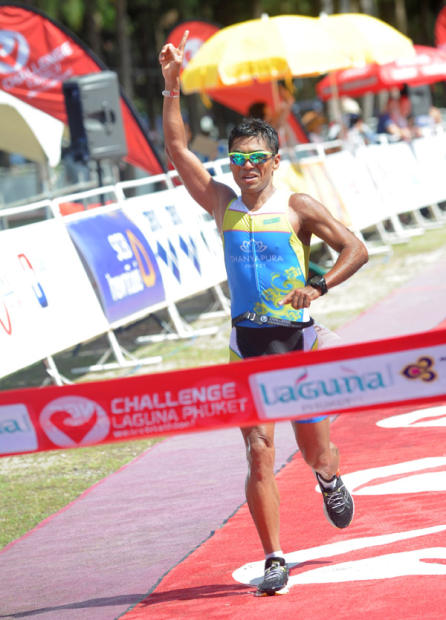
ST: Are your crews local?
Peter: This crew is all Thai. I worked with them last year. It is learning process getting them the right equipment and shooting a different way than they are used to. I had a Vietnamese crew in Vietnam. They were OK. A lot of places like Vietnam, the talent is still emerging. In a couple years they will be fantastic.
ST: Where are the best crews?
Peter: I’d say the best crews are in the United States. Because they know what it is to be on network television. When we were doing Ironman Hawaii, we didn’t pay a lot – we paid fair but not over the moon. But I had guys who were making $5,000 a day on other jobs who were calling me saying, ‘I don’t care what the pay is. I want to do this.’ So that is why United States has the good supply of camera talent. And there are good guys in the UK, Germany, Australia and New Zealand. A lot of our motorcycle guys are US and European. In fact for Bahrain next week we are bringing in two cameramen who worked in Kona. That will be a very important show.
ST: What will it focus on?
Peter: I am not producing the show. I am kind of the executive producer. It takes too much time developing a new event, a new television thing. You have to have men on the ground for a long time dealing with a new infrastructure.
ST: What would be your suggestion for the guys on the ground there?
Peter: Here’s what I tell every cameraman when I give a talk at universities or somewhere else. ‘It is very simple guys. Tell a story.’ When I was in high school the English teacher asked us to write an essay. She told us, ‘Tell a story.’ I tell my cameramen and producers, ‘Listen to people. Listen to what people are saying and digest that. And reflect the importance of the event to their lives and how it fits into what this show is about. It is not brain surgery.’
ST: It takes good instincts?
Peter: It is telling a story and don’t get hung up on other things like too much technical stuff.
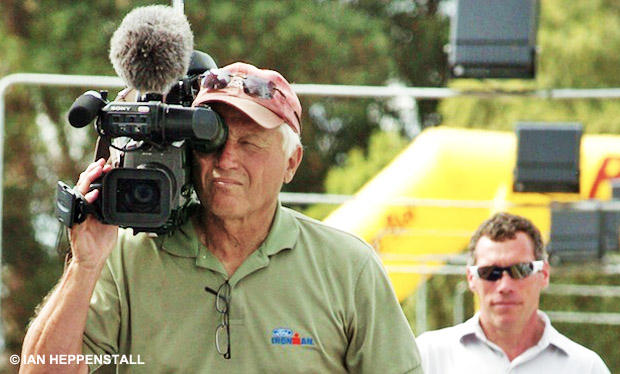



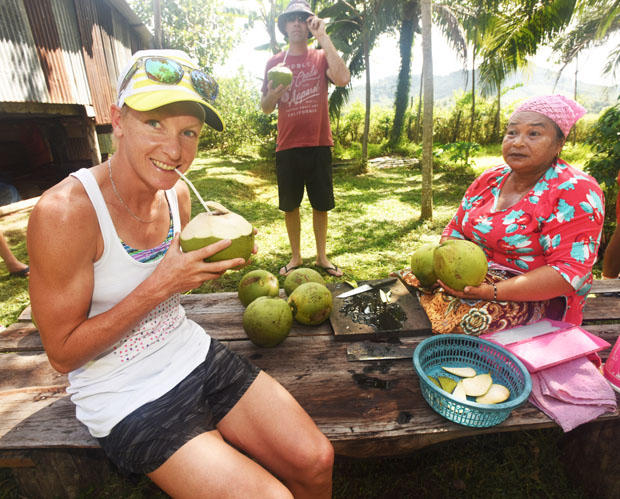
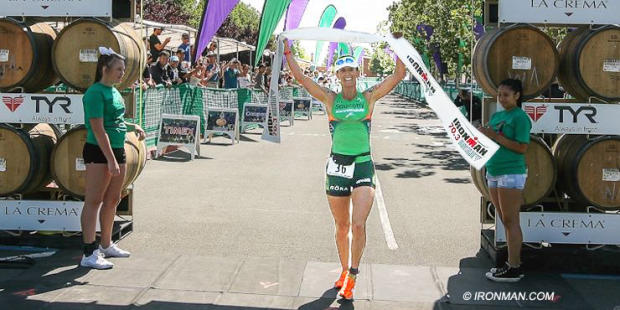

Start the discussion at forum.slowtwitch.com